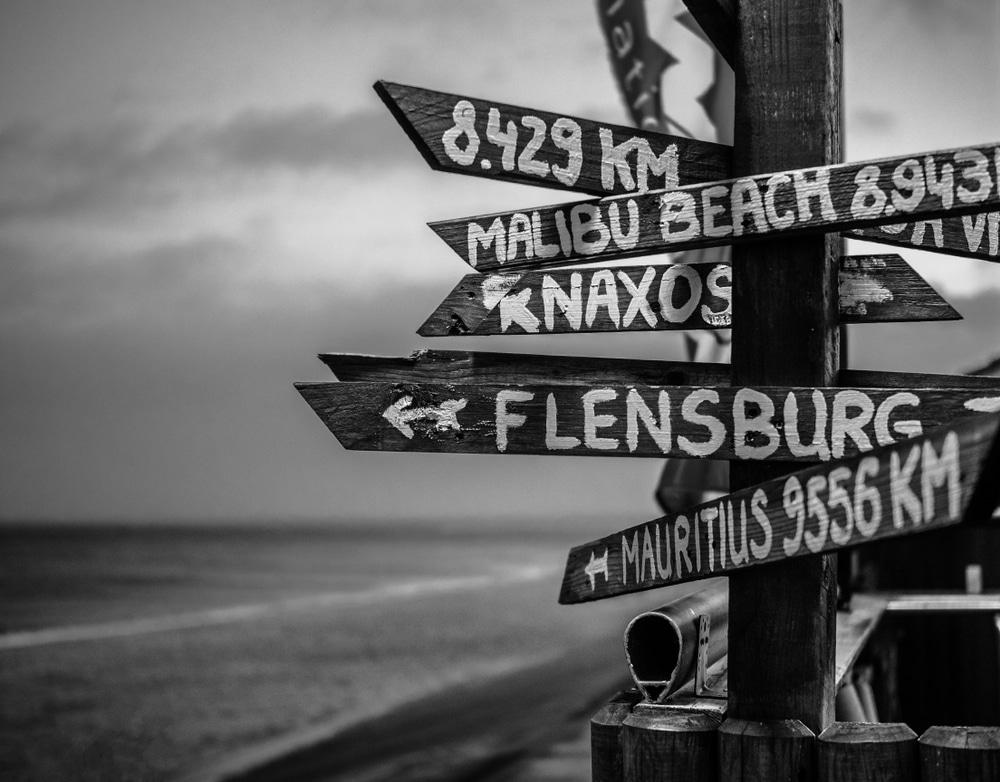Sylt – the queen of the North Sea but also the island of the rich and beautiful. The special charm of the island? Endless white sandy beaches, picturesque dune landscapes, pretty villages with small and large Frisian houses, cosy cafés, well-known star restaurants and lots of North Frisian cordiality.
Sylt an island of contrasts
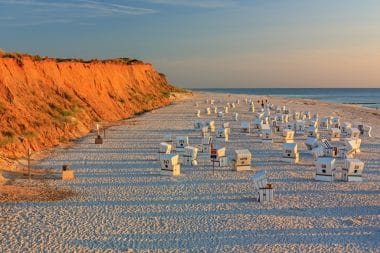
Experience diversity in a confined space! Sylt is the largest German North Seaisland and enchants holidaymakers and locals alike with a unique natural landscape and the healthy stimulating climate of the North Sea. The island stands out from its neighboring islands due to its unusual shape. Again and again, she braces herself with all her strength against the tides and heavy storm surges. Sometimes it loses – more and more often recently.
In the north of the island lies List and the Ellenbogen. In the south, the island ends behind the small harbour town of Hörnum and the Odde of the same name. To the west lies the main town of Westerland. Here you will find the train station, the island airport, numerous shops and health clinics. In the east you will find original villages with farms and the impressive excursion destination Morsum-Kliff. If you look at the long history of the island, you will read about Keitum whalers, German-Danish wars, storm surges and the military base in the Second World War. But you also learn a lot about old Frisian traditions and the inhabitants of the island. Royal Frisians first settled on Sylt in 900 AD.
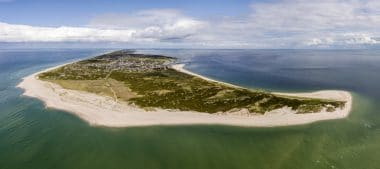
The worst storm surges hit the island in 1436 and 1362. At that time, the floods engulfed entire villages! First the village of Eidum and the village of Steidum. The northern part of the island – Listland – was a Danish exclave for many years. Even today, motorists have to pay tolls on the narrow road at Lister Ellenbogen.
Today, Sylt is one of the most expensive holiday destinations in Germany. Holiday properties and luxury villas have been built in the villages since the 60s. Many wealthy people treat themselves to a second home on the island to spend days off on Sylt. Locals, on the other hand, are commuting more and more often between Sylt and the mainland, as there is hardly any affordable housing left for them. This development makes you think. But despite everything, the Queen of the North Sea does not lose its beauty! You simply have to have been here once to feel the special charm of the island on your own body.
The centre – I want to go back to Westerland
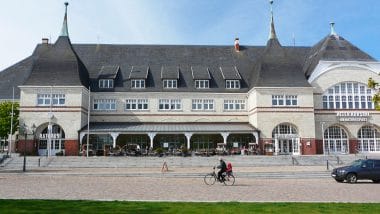
Westerland has developed from a dreary fishing village to a tourist stronghold. This was ensured by the spa boom in the 19th century. With the inauguration of the Hindenburgdamm, the number of overnight stays rose rapidly. Today, the arriving visitors from Westerland are spread out in all directions of the island. When you enter the station forecourt, you are first greeted by weird green men.
The “Travelling Giants in the Wind” were designed by the Kiel artist Martin Wolke. Behind it stretches the pedestrian zone. Along Friedrichsstraße, there is a lively hustle and bustle all year round. Here, well-known brand shops and department stores, bookstores and tea shops are lined up. If you go west, you will reach the beach and see the blue sea. There are beach chairs here and concerts are regularly held in the beach shelter. In addition, especially in the high season, many events take place, such as the Harley Davidson meeting. Then Friedrichsstraße is transformed into a huge motorcycle mile.
The south of Sylt – the tip of the island
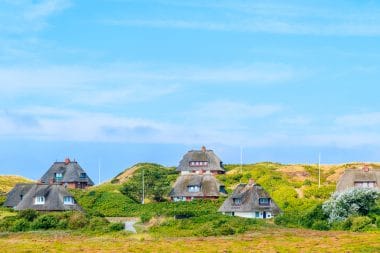
Behind the Sylt villages of Rantum and Hörnum lies the southern tip of Sylt. She is called Hörnum-Odde. At its narrowest point, it is just 300 meters wide. Nowhere else can you get closer to the North Sea than here. A natural spectacle of a special kind, which you should definitely experience for yourself. From Hörnum follows a beautiful walk along the beach, past the red and white lighthouse of the community further and further out. The houses are getting smaller and the walkers fewer. After 15 kilometers you have reached the southern tip and can take in the unique silence. Hörnum-Odde is also known as the Achilles’ heel of the North Sea. There is much more to discover in the south of the island: The Rantum Basin, for example, is a nature reserve and breeding ground for countless bird species. Exciting guided tours for visitors take place here. In the village itself there is the Sylt spring – the island has been pumping its own mineral water from a deep well to the surface for over 25 years. It is also a popular event location where great events for young and old visitors take place all year round. From the harbour in Hörnum, great excursions out to the North Sea depart every day. Popular tours take place to the seal banks off the island.
The north of Sylt – parties under the elbow
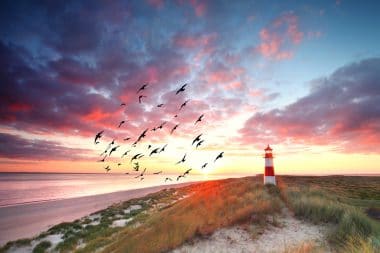
Celebrities meet in Kampen. There are countless small fashion and jewellery boutiques, well-known bars, nightclubs and expensive hotels. But the small Frisian village can do so much more. The almost undeveloped natural landscape around the former captain’s village exudes special charm. First and foremost is the Uwe Dune – known as the highest elevation on the North Sea island.
The dune rises 52.5 m into the air on the southwestern outskirts of Kampen. Visitors reach the top of the sand dune via a large wooden staircase. From the viewing platform you have a fantastic view over the island and on a clear day you can even see the Danish mainland on the horizon. The dune was named after the Sylt freedom fighter Uwe Lornsen, who became a national hero during the Frisian independence movement.
Going in a north-easterly direction, on the other hand, you will reach the Vogelkoje – a nature reserve that was used to catch wild ducks as early as the 18th century and is now considered a sanctuary for breeding bird species.
Final tips for your short break on the island
It is a phenomenon that every Sylt vacationer knows: Already when crossing to the island, the feeling of vacation sets in, like a switch that is suddenly flipped. The most famous train in northern Germany is certainly the car train to Sylt. The Hindenburg Dam has been connecting the North Sea island with the mainland since 1927.
During the 35-minute crossing, travelers first pass meadows full of wind turbines and isolated farms, then it becomes quieter. The Wadden Sea and the North Sea follow and soon you can see the island. The first salt marshes appear on the shore. Horses, Scharfe and stately Frisian houses follow before you reach Westerland and can cover the last stretch to your accommodation. The red car train commutes daily between Westerland and Niebüll. The double-decker train transports up to 150 vehicles and many times as many people back and forth between the villages.


